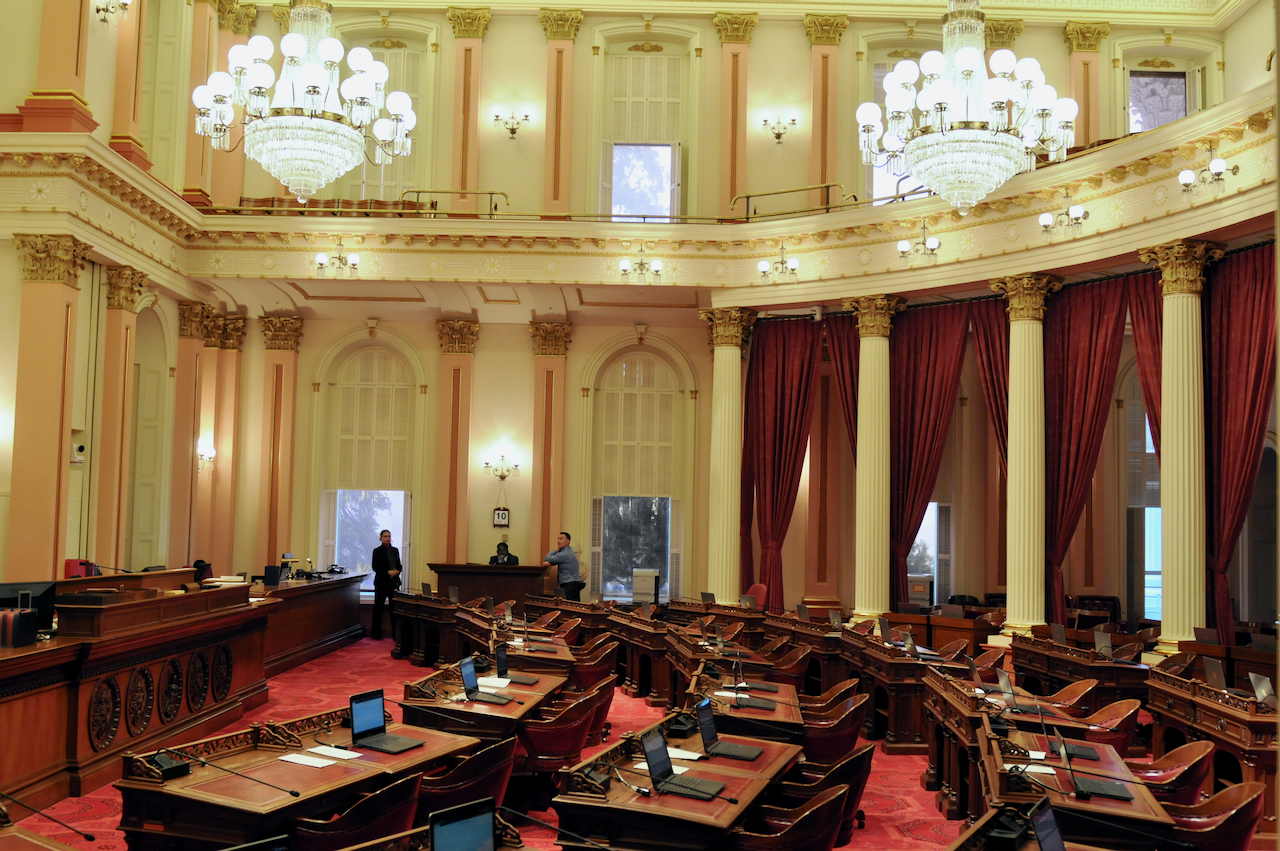
Journals of the California Legislature. (Photo: Wikipedia)
California Legislature: Concurrence in Bill Amendments
Both the Assembly and Senate use their ‘unfinished business’ sections of the Daily File for consideration of bills on concurrence
By Chris Micheli, March 16, 2020 6:15 am
As the California Legislature is a bicameral body, after a bill has been passed by its house of origin, it is transmitted to the other house for further consideration. If the second house makes amendments to the bill, then the bill must return to its house of origin for a final vote, prior to being submitted to the governor for signature or veto.
When the Senate amends and passes an Assembly bill, or the Assembly amends and passes a Senate bill, the Senate (if it is a Senate bill) or the Assembly (if it is an Assembly bill) must either “concur” or “non-concur” in the amendments made by the other house. If the Senate concurs (if it is a Senate bill), or the Assembly concurs (if it is an Assembly bill), the Secretary of the Senate or the Chief Clerk of the Assembly notifies the house making the amendments that the house of origin concurred in the amendments and the bill is ordered to enrollment before being sent to the Governor’s Desk.
Both the Assembly and Senate use their “unfinished business” sections of the Daily File for consideration of bills on concurrence. If the amendments are more technical in nature, then the bill can be considered on the Floor without re-referral to a committee in the house of origin. In such a case, the bill must be on file at least one day, although this rule is waived during the final days of the Legislative Session.
However, if substantive changes were made to the bill in the other house, then a policy committee in the house of origin will need to consider the bill as amended. The house of origin must concur in the other house’s amendments in order for the bill to be sent to the Governor for final action.
Under the Joint Rules, when a bill that has been passed in one house is amended in the other house by the addition of a section providing that the act shall take effect immediately as an urgency statute, and is returned to the house in which it originated for concurrence in the amendments, the procedure and vote is as follows:
- The presiding officer shall first direct that the urgency section be read and put to a vote. If two-thirds of the membership of the house vote in the affirmative, the presiding officer shall then direct that the question of whether the house shall concur in the amendment or amendments shall be put to a vote. If two-thirds of the membership of the house vote in the affirmative, concurrence in the amendments shall be effective.
- If the affirmative vote on either of the questions is less than two-thirds of the membership of the house, the effect is a refusal to concur in the amendment or amendments, and the procedure thereupon shall be as provided in Rule 28.
In most instances, a concurrence vote is relatively straightforward because the bill already passed its house of origin once and so it is anticipated that the measure will pass again after the other house has also passed the bill. On occasion, however, a bill has been amended in a manner that is objectionable and so there is a lack of support for the bill when it returns for the concurrence vote.
- Partition of Property in California - December 15, 2025
- Relief from Child Support Orders - December 14, 2025
- County Harbor Improvement - December 14, 2025




